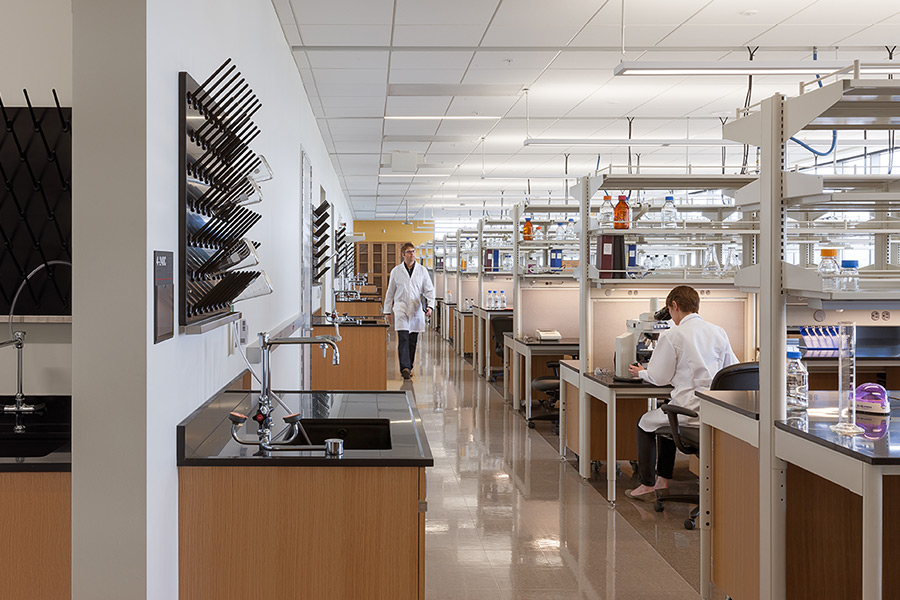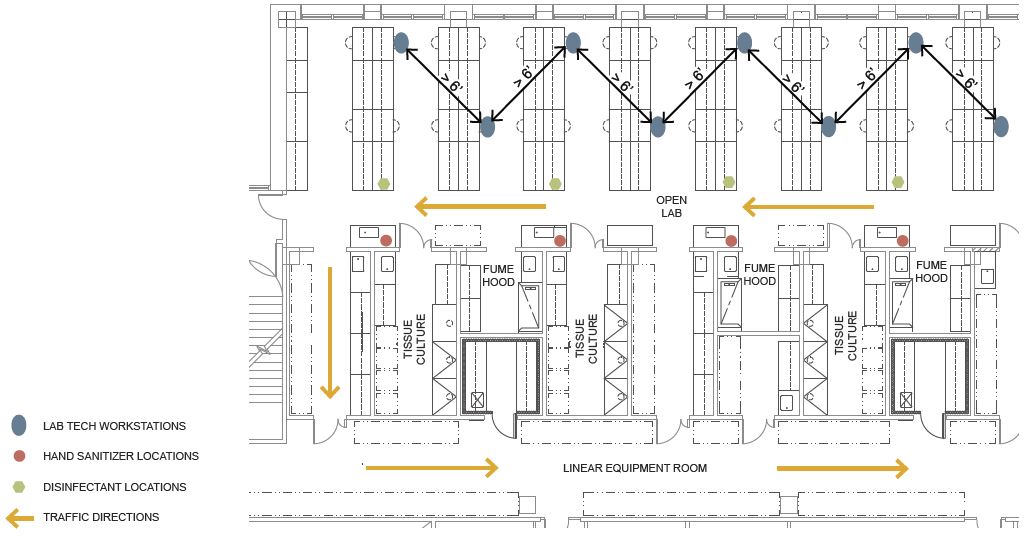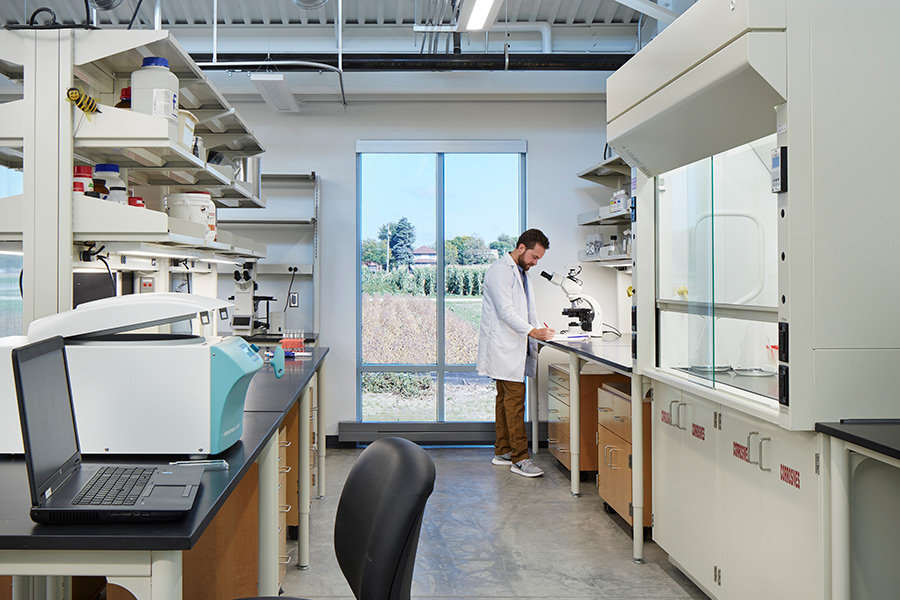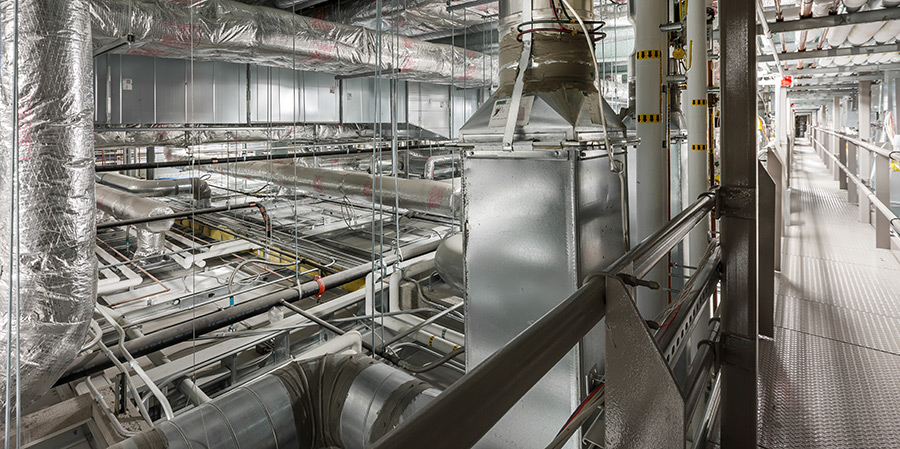
A Safe Return to the Research Lab
in Perspectives
Considerations for Re-opening Laboratories
by Anna Pravinata, AIA, LEED AP and Mamie Harvey, AIA, LEED AP BD+C
The COVID-19 pandemic has created unprecedented challenges for laboratory environments. Labs were shut down within a matter of days to comply with the “stay-at-home” order. The University of Minnesota recently developed the Sunrise Plan to assist university employees in determining if they qualify to work on site, what steps are required to achieve permission, and what requirements must be met if employees are working on campus. Under this plan researchers, whose work requires physical presence to advance research goals, or grant requirements, would be able to work on site.
As we look forward to the re-opening of labs post COVID-19, we have developed several considerations that may guide the creation of a safe and healthy lab environment. These considerations are meant as a starting point in supporting organizations in re-opening their laboratories.
1. The following physical changes can be implemented in laboratory environments. The important aspect of these physical lab changes is to give people visual cues about social distancing rules and reduce potential ambiguity.
- Disperse lab workstations to avoid two lab techs from facing each other or being in the same aisle.
- Install physical barriers, like clear acrylic or plexiglass, if separation is not possible.
- Reconfigure spaces by moving equipment to allow for six feet of separation between lab
techs. - Designate one-way traffic to the extent possible to avoid people passing each other in
tight quarters and allowing a six-foot separation. - Remove chairs and/or tables and spread them out to achieve the six-foot separation
guideline. - Designate an isolation room if someone feels ill.
Diagram showing potential physical changes in an open laboratory environment
2. Limiting access to shared lab facilities, such as core labs, can be an effective way to minimize risks:
- Create an online sign-up system for use of the facility.
- Employ security measures to allow entry for only critical employees.
3. In order to support healthy habits, the following items can be considered:
- Install “touch-free” door handles.
- Provide personal protective equipment (PPE) at the entries to labs or other highly visible and easy to access locations.
- Provide touch free hand sanitizers.
- Provide disinfectant at multiple locations within the lab.
- Add a procedure for disinfecting work surfaces, chairs, etc., at the end of each workday.
4. Indoor air quality is an important factor in controlling virus spread. HVAC system adjustments may be able to mitigate the spread of the virus. Any changes will need to be vetted thoroughly as most research environments have equipment and processes that are sensitive to temperature, humidity, and/or particulate levels requirements.
- Provide more fresh air by increasing the air change rate. This will impact the pressure
level in a laboratory and should be carefully considered in conjunction with the pressure of the neighboring spaces. - Increase the humidity level. Some airborne viruses lose effectiveness above a certain
humidity level. This modification may impact research processes and should be carefully considered. - Install filters with a high MERV (Minimum Efficiency Reporting Value) rating. The higher
the MERV rating, the more particles will be removed from the air. This adjustment may require more powerful fans to overcome the air pressure drops. This will need to be carefully reviewed by a mechanical engineer. - Utilize UV lights inside of air handling units to destroy surface and airborne microorganisms within the air handling unit. This helps to ensure that the air leaving the unit is clean. There is nearly no additional pressure drop associated with these systems so they can usually be installed without other major equipment modifications.
- Treat the air and surfaces within the lab space by installing bipolar ionization systems in air handling units. These systems introduce ions into the air that is delivered to the space. These ions have been shown to neutralize many types of bacteria and viruses both in the air and on surfaces within the space. Like UV lights, there should be no additional pressure drop to overcome.
This initial list of strategies is meant as a starting point for discussion. As this situation evolves, many more aspects of safely running labs will need to be addressed to allow employees to work in the lab environment safely and successfully. We will continue to monitor the discussions and recommendations and update this document periodically.



